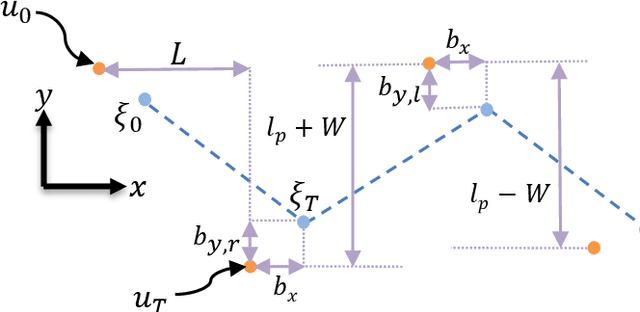Walking Control Based on Step Timing Adaptation
Paper and Code
Jul 23, 2018



Step adjustment for biped robots has been shown to improve gait robustness, however the adaptation of step timing is often neglected in control strategies because it gives rise to non-convex problems when optimized over several steps. In this paper, we argue that it is not necessary to optimize walking over several steps to guarantee stability and that it is sufficient to merely select the next step timing and location. From this insight, we propose a novel walking pattern generator with linear constraints that optimally selects step location and timing at every control cycle. The resulting controller is computationally simple, yet guarantees that any viable state will remain viable in the future. We propose a swing foot adaptation strategy and show how the approach can be used with an inverse dynamics controller without any explicit control of the center of mass or the foot center of pressure. This is particularly useful for biped robots with limited control authority on their foot center of pressure, such as robots with point feet and robots with passive ankles. Extensive simulations on a humanoid robot with passive ankles subject to external pushes and foot slippage demonstrate the capabilities of the approach in cases where the foot center of pressure cannot be controlled and emphasize the importance of step timing adaptation to stabilize walking.
 Add to Chrome
Add to Chrome Add to Firefox
Add to Firefox Add to Edge
Add to Edge